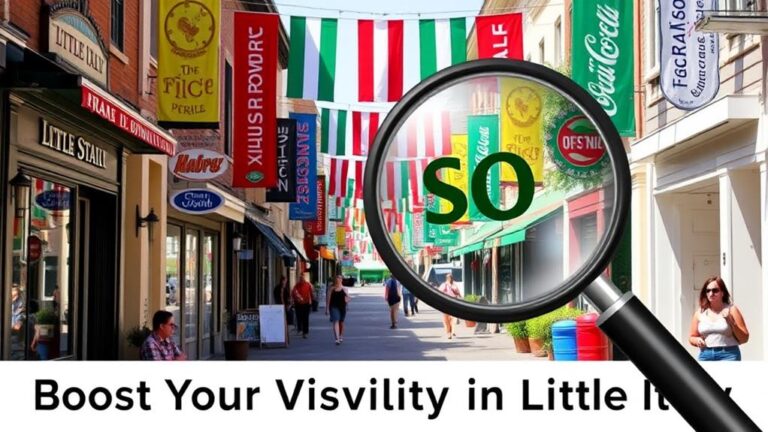In the evolving landscape of digital marketing, the art of Integrating Keywords into Your Content Strategy remains paramount. Today’s content creators are continually challenged with marrying SEO optimization with a narrative that captivates and engages. Merely peppering content with keywords is no longer sufficient; instead, an intricate approach to keyword research and placement is essential to ascend the organic search rankings.
A robust content marketing strategy is one that achieves search engine visibility without compromising the compelling voice of the brand. What separates the amateurs from the seasoned veterans is their ability to optimize content in a way that feels both natural and intentional, strategically targeting keyword opportunities to bolster visibility and credibility within the vast online marketplace.

Understanding the Balance of Creativity and SEO in Content Creation
As the digital landscape evolves, content strategy becomes a complex interplay between expressing a unique voice in writing and SEO optimization. The art of creative content integration is not merely about peppering articles with keywords, but rather about an authentic connection with readers that also satisfies search engines. This delicate equilibrium requires not only keyword research that mirrors market research but also a solid content marketing strategy that aligns with user intent and search behavior.
- Consumer-Centric Keyword Analysis: Delve into what prospects are searching for to directly address their pain points and desires through tailored content that resonates.
- Integrating Keywords Organically: Weave keywords into headlines, subheads, and body text in a way that maintains narrative flow and reader engagement.
- Reflecting the Sales Funnel Stage: Craft content that is congruent with where the reader might be in the customer journey, ensuring relevance and added value.
Jean Dion of Search Engine Journal emphasizes the value in viewing keyword research as a foundational component of market research. It unlocks a nuanced understanding of audience needs, enabling marketers to create a content marketing plan that not only grabs attention but also fosters genuine interest and interaction.
- Keyword-rich headlines should entice and inform, subtly hinting at the depth of the content that awaits the eager reader.
- Content bodies should be rich tapestries of information, thoughtfully interspersed with keywords that enhance, rather than detract from, the user’s experience.
- Reflecting the human element in the digital dialogue, using a voice that connects and converts.
Striking this balance is more crucial than ever in the era of Google’s Hummingbird update, which prizes in-depth content and the natural use of keywords over mere density.
Integrating Keywords into Your Content Strategy: A Natural Approach
With the balance tilting ever more towards audience-centric content, weaving effective keyword integration into your content strategy should seem less of an algorithmic challenge and more of an engaging conversation with your target audience. It’s about understanding who they are, what they need, and how they communicate – transforming cold metrics into living, breathing brand dialogue. Let’s explore how to achieve this harmoniously, enhancing brand awareness, lead generation, and ultimately driving sales conversions.
Identifying Your Target Audience: The First Step to Keyword Integration
Knowing your audience isn’t just beneficial; it’s the cornerstone of a successful content strategy. Through the lens of demographic data, behavior patterns, and identifying unique pain points, Google Analytics and social media analytics become more than tools; they are your guides to a treasure trove of insights. These insights allow for a crafted approach that resonates deeply with the needs and queries of your intended consumers, setting the stage for meaningful brand connections and optimized lead generation.

Adapting Your Voice: Creative Strategies for Keyword Incorporation
The digital vernacular is ever-evolving, just as your audience and their search behaviors are. Embracing this change means regular reevaluation of your keyword strategy. It involves staying vigilant about industry trends and adapting to new search engine algorithms. By employing competitive analysis tools and keeping an eye on social media discussions, your content strategy remains dynamic and capable of capturing real-time search intent. This not only fosters brand awareness but also ensures that your content remains relevant and discoverable.
Using Synonyms and Variations: Diversity in Expression
In the rich tapestry of language, synonyms and variations play a crucial role in keyword integration without compromising the natural flow of content. Rather than relying on a repetitive frequency of exact keywords, sprinkling your content with a variety of related terms and long-tail keywords can greatly enhance readability while maintaining SEO strength. This strategy aligns with search engines’ appreciation for diversity in expression and reflects a more intent-based search dynamic, vital for securing those coveted sales conversions.
- Comprehensively analyze audience demographics
- Regularly update keyword strategies to reflect search trends
- Incorporate creative keyword synonyms for natural content flow
- Utilize competitive analysis for broader content strategies
- Focus on long-tail and intent-based keywords for deeper audience engagement
Keyword integration is not about strict adherence to a formulaic approach; it’s a delicate art form that requires a deep understanding of your target audience, an adaptable voice, and thoughtful use of language. By mastering this trifecta, you’ll achieve a content strategy that not only resonates with your audience but also catapults your brand’s digital presence.
Unlocking the Power of Headlines for Enhanced Visibility
The creation of headline content is paramount in today’s fiercely competitive digital markets where the average user is inundated with information. With the correct calibration, headlines embody the essence of engaging content and serve as the beacon that significantly boosts organic search rankings. Crafting headlines that are both intriguing and SEO-friendly is an intricate part of modern content strategy, tethering search engine visibility directly to the quality of your headline.
Crafting Hypnotic Headlines with Keyword Enrichment
Engrossing audiences with spellbinding headlines requires more than a catchphrase. Keywords need to be intricately woven into the tapestry of your titles, ensuring that they resonate with both audiences and search algorithms. The strategic placement of such keywords within a headline can be a make-or-break factor in capturing the elusive attention of a potential reader, thus skyrocketing the reachability of what might otherwise be considered just another piece of content.
Studying Viral Headlines for Inspiration
Understanding what propels content into the viral stratosphere is critical for any content creator seeking to enhance visibility. Analyzing viral content headlines reveals patterns of success, such as the manipulation of curiosity and emotion, which can be replicated and adapted with originality. The study of these trends is not about duplication but rather about understanding the drivers of compelling, share-worthy headlines that rake in high organic search rankings.
Beyond Exact Match: Understanding Semantic Search
As search engines continually refine their algorithms, a shift from exact-match keyword strategies to semantic search understanding has emerged. Content creators are thus urged to consider the subtleties of semantic search, where context and synonyms are as important as primary keywords themselves. By embracing and leveraging the nuances of language within headlines, writers ensure that their content is not just found, but deeply resonated with the intended audience.
The Art of Subheadings: Leading Scanners to Value
In the digital age of rapid content consumption, the importance of engaging subheads cannot be overstated. They are the stepping stones that lead scanners to the deeper value within your articles and web pages. To enhance content scannability, integrating keywords into your subheadings is not just a recommendation—it’s a cornerstone of SEO best practices.

Utilizing Latent Semantic Indexing (LSI) in your subheadings serves a double purpose. It not only hooks the scanner’s eye but also provides signals to search engines about the contextual relevance of your content. This sophisticated approach to keyword integration works seamlessly with modern SEO algorithms, helping your content rank for related terms and concepts.
- Ensure your subheads are informative and reflect the core message of the section they lead into.
- Keep them snappy and persuasive, much like miniature headlines to retain reader engagement.
- Infuse LSI keywords to promote semantic understanding for both users and search engines.
- Aim for a natural tone that maintains readability while optimizing for online discovery.
Remember, subheadings that triumph in converting scanners to readers are the ones that promise and deliver value. They aren’t just waypoints; they’re your chance to showcase relevance and expertise, enticing your audience to delve deeper into your content.
Keyword Frequency vs. Keyword Value: Current Insights
As the digital marketing sphere evolves, so does the debate around keyword strategy. The post-Hummingbird SEO landscape has brought a significant shift, directing attention away from pure keyword frequency to the intrinsic value and strategic placement of keywords within content. Understanding this distinction is crucial for anyone keen on mastering content optimization in alignment with the latest SEO algorithm updates.
Keyword Density Myths: What You Need to Know Post-Hummingbird
There has been a profound change in how keyword density is perceived in SEO. The Hummingbird update marked a pivotal moment, redirecting the focus toward the relevance and context of keywords as opposed to their mere frequency. As such, content creators must dispel the obsolete notion that keyword density is a standalone metric of success. Current optimization techniques prioritize substance, ensuring that keywords augment the narrative naturally and provide genuine value to readers.
TF-IDF: Incorporating Keyword Variations and Relevance
TF-IDF, which stands for term frequency-inverse document frequency, has emerged as a sophisticated approach for content optimization. This method promotes the use of keyword variations and gauges how frequently specific terms appear in relation to their prevalence across a range of documents. Adopting TF-IDF assists content creators in ascertaining the significance of keywords within their niche, thereby enhancing the relevance and depth of their content in the eyes of search engine algorithms.
Striking the Right Keyword Balance for User and Search Engines
To truly excel in content optimization, striking the right balance between keyword frequency and keyword value is essential. This equilibrium is not just about appeasing search engine algorithms but also about catering to the user experience. By integrating strategic keyword use into high-quality, informative content, marketers can achieve a synergy that resonates with both the technical requirements of SEO and the informational needs of users. Achieving this harmony epitomizes the pinnacle of modern SEO practices.
SEO Evolution: The Shifting Landscape of Keyword Relevance
The domain of Search Engine Optimization has undergone remarkable transitions, evolving continuously to meet the dual demands of user preferences and technological advancements. This evolution signifies a pivotal shift in the approach to keyword relevance within content marketing strategies. Notably, significant algorithm updates such as Google’s Hummingbird and BERT have been catalysts in reshaping the principles of content optimization. Marketers and content creators alike must recognize these changes to adapt and stay competitive within the ever-changing SEO climate.
From Hummingbird to BERT: The Algorithmic Journey
Hummingbird marked a profound shift from keyword density metrics toward intent-driven, context-rich content. Fast forward to the introduction of BERT, an algorithm leveraging natural language processing (NLP) to better understand the nuances of human language in search queries. This transition underlines the necessity for a heightened focus on the semantic elements of keywords, going beyond the traditional use of keywords and stepping into a realm that prioritizes the relationship between user queries and content relevance.
Market Research Through Advanced Keyword Analysis
Advanced keyword analysis has become an indispensable form of market research, providing a lens through which we can view and understand consumer behavior and needs. By identifying trending topics, emerging patterns, and language used by the target audience, businesses are able to craft a content strategy that speaks directly to the user’s interests and search habits. This insight grants marketers the foresight to predict shifts in market dynamics and adjust their strategies accordingly, ensuring sustained keyword relevance in a growing sea of content.
Understanding User Search Intent for Smart Keyword Use
At the core of SEO success lies the mastery of interpreting user search intent. The ability to intuitively cater to the queries of users through smart keyword use offers content an edge in organic search rankings. A comprehensive grasp of search intent equips marketers to align content more accurately with what users seek, thus enhancing the efficacy of their content strategies. This level of understanding is fundamental for developing a sophisticated content strategy that not only aligns with the latest SEO evolution but also drives meaningful engagement and conversions.




